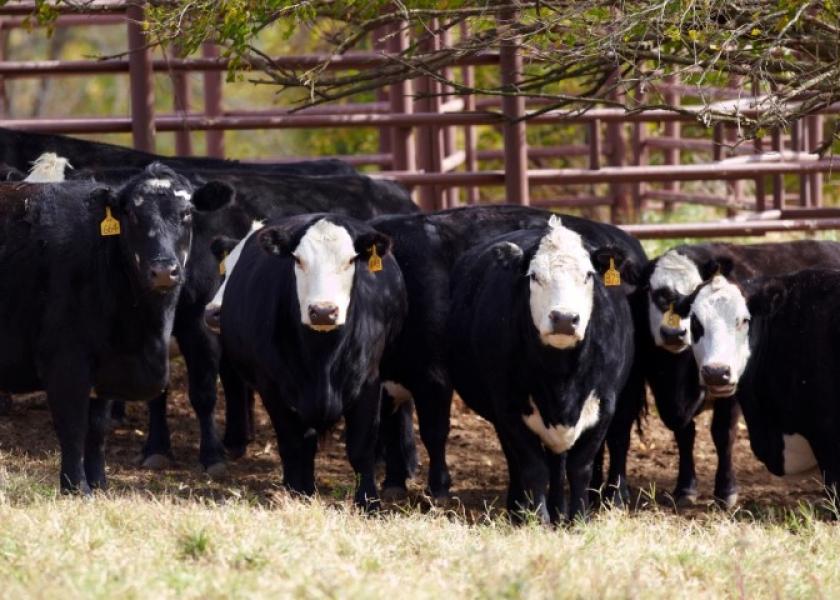Producers Discuss Latest Research at Purina Animal Nutrition Cattle VIP Events

Nearly 1,000 U.S. cattle producers and industry leaders gathered at the Purina Animal Nutrition Center in 2014 for a series of educational and networking events hosted by Purina Animal Nutrition.
In total, six Cattle VIP events were held at the Purina Animal Nutrition Center in Gray Summit, Mo., throughout 2014. Attendees at this year’s VIP events represented 376 farms and more than 406,000 cattle.
“Our goal with these events is to share strategies for optimal herd performance while giving producers a firsthand look into the Purina Animal Nutrition Center and the research we conduct at our facility,” said Rod Nulik, national customer business manager for Purina Animal Nutrition.
VIP guests had the chance to learn about a range of topics including the latest research in cattle nutrition and management and network with other producers from across the U.S. about successful management strategies. In addition attendees toured the Purina Animal Nutrition Center.
The Purina Animal Nutrition Center is the heart of the company and the backdrop to the company’s extensive nutrition research. A working farm with almost 1,200 acres and 3,000 animals makes the Purina Animal Nutrition Center a unique facility within the feed industry.
Research shared
The primary focus of the VIP events is sharing research with producers. More than 1,350 research projects have been conducted at the Purina Animal Nutrition Center to date.
Research shared during the events included:
- Protein and mineral supplementation to optimize forage use.
- Managing reproductive efficiency.
- The economics of creep feeding.
- Strategies for successful early weaning.
- Feeding dairy-beef.
- Utilizing implants.
- Fetal programming.
- Hands-on demonstrations on body condition scoring (BCS).
The underlying theme behind all of this research is the concept of Sustained® Nutrition: Purina’s nutritional program that emphasizes a 365 days a year approach to feeding cattle.
Ron Scott, director of cattle research with Purina Animal Nutrition, shared the importance of Sustained® Nutrition, explaining that maintaining a consistent BCS throughout the year can be more economical than helping cattle regain condition pre-calving.
“A cow with a consistent BCS of 5.5 to 6 year-round will be more primed for breeding and better suited to pass on her full potential genetic expression to her offspring,” Scott said. ”We’ve seen benefits of using a Sustained® Nutrition program including: improved conception rates, increased weaning weights and the increased probability of superior calf health.”
Using nutritional programs that contain Intake Modifying Technology® is what makes Sustained® Nutrition possible, said Chris Forcherio, beef research manager with Purina Animal Nutrition. He explained that supplements built with Intake Modifying Technology® are designed to change the feeding patterns of cattle so that they consume small “snacks” of supplement throughout the day as needed based on forage quality and their individual nutrient needs.
“We’ve found here in our herd and in herds across the country that, if the pasture is of adequate quality to supply most of the nutrients the cow needs, intake of the supplements formulated with Intake Modifying Technology® will be low,” Forcherio said. “As the pasture quality declines over the season and the forage isn’t supplying the necessary nutrients, the cow will eat more of the supplement to fill the nutritional void so she can maintain a more consistent BCS.”
Purina Animal Nutrition Center
The innovations brought to cattlemen from the Purina Animal Nutrition Center beef cattle research unit are second to none. “Our dedication to inventing programs that solve problems relative to cattlemen’s limited resources of land, labor, capital and management is designed to provide sustainability for the cattle industry,” said Scott.
Today, much of the pasture facilities at the Purina Animal Nutrition Center are used to maintain a herd of Black Baldy cows and their calves. The cow herd is used to develop and evaluate supplementation programs that enhance forage use and improve cow productivity. The calves, which are the result of Charolais bulls mated to the Black Baldy cows, are used to evaluate new innovative nutrition programs for the creep and weaning periods.
In addition to brood cow research, forage-based feeding programs are constantly being developed for stockers, replacement heifers and bulls. Numerous studies are conducted in confinement at Purina Animal Nutrition’s growing/finishing facilities where calves are either individually fed with Calan gates (for precise measurements of feed intake and conversion) or group fed in feedlots. New products and programs are validated by further testing at ranches, feed yards and universities before being made available to Purina Animal Nutrition’s customers.
“The research we conduct contributes to the improvement of technology in our industry,” said Nulik. “We are always looking for ways to help make producers more efficient, and it’s a pleasure to welcome producers from across the United States to the Purina Animal Nutrition Center to showcase our latest research.”
For more information on Sustained® Nutrition or Intake Modifying Technology®, visit http://purinamills.com/cattle/.
Source: Purina Animal Nutrition LLC







